347.3 billion emails will be sent and received every single day in 2023, and we’re on track to hit 361.6 billion by 2024. In a world of overflowing inboxes, email is a highly effective way for marketers to reach their target audience — but only if your recipients open your mail.
This blog post discusses how to measure your email open rates, tips to boost them, and how to use monday sales CRM to track, present, and share your email marketing performance metrics.
Try monday sales CRMWhat is an email open rate?
An email open rate is the percentage of emails opened out of the total number of emails delivered. This calculation is measured to gauge the success of your email marketing campaign.
Here’s a simple email open rate formula you can use:
- Number of Emails Opened/Number of Delivered Emails x 100 = Email Open Rate
Example: Let’s say you have 1,000 delivered emails and your recipients open 235 of them. The formula is 235/1000 x 100 which would equal a 23.5% email open rate.
Why do we track email open rates?
There are multiple ways to assess if your email campaigns are performing well.
Email open rates are worth our analysis because they provide insights into how well a marketing message resonates with your audience.
The aim is to improve the chances of your recipients opening your email, reading your marketing content, and clicking through to your landing pages. Open rate data also guides:
- Email segmentations: track how well your campaign is working with a specific audience, and adjust as needed to send more relevant content.
- Subject lines: experiment with how different personalization options impact open rates.
- Delivery schedule: notice a drop or peak in open rates to judge the best time to send your message.
Email open rate vs. email delivery rate vs. email send rate
Email open rate isn’t the only marketing metric to consider. Check out how it compares to other key metrics:
- Email send rate: the total number of emails you send to recipients.
- Email delivery rate: the number of emails that make it to a recipient’s inbox. Some will bounce due to an invalid address; others will never make it through a spam filter.
- Email open rate: the number of emails your recipients open. Remember: if your recipient deletes an email without opening it or leaves it unread and sitting in their inbox, these actions count as part of your delivery rate but not your open rate.
More email marketing terms: email bounce rate, email conversion rate, email ab testing
What is a good email open rate?
Marketing automation platform, Mailchimp, conducted a 2022 benchmark report which found that 21.33% is the average email open rate across industries. But digging deep into different niches reveals a wider variety of rates like the following:
- Business and finance – 21.56%
- Consulting – 20.13%
- E-commerce – 15.68%
- Legal – 22%
- Professional services – 21.94%
- Retail – 18.39%
- Software – 21.29%.
How can you improve email open rates?
Marketers don’t spend hours perfecting email campaigns only for their messages to go unread. If you’re struggling to get your audience to open your emails, try using these tips to boost your open rates.
1. Increase delivery rates
The first tactic here is pretty intuitive because your target audience can only open your marketing emails if they receive them in the first place. Take the following steps to improve message delivery:
- Ask email subscribers to whitelist you or add you to their address book. Remember to provide instructions for Gmail, Yahoo, Outlook, and more, to cover all bases.
- Use double opt-in so a new subscriber must confirm their signup by clicking a link in a follow-up email. This step eliminates invalid emails and protects against fake signups.
- Send from a whitelisted IP address and ensure your domain is verified to ensure your message makes it past spam filters.
But of course, simply increasing the emails in your send list isn’t beneficial if the emails aren’t going to the right people. Which leads us to the next tip.
2. Segment your email list
Segmenting your email list means dividing your recipients into different categories based on criteria like age, gender, geographical location, or hobbies. You’ll then reach out to each “bucket” of email subscribers with content relevant to their interests. HubSpot lists this type of email personalization as the #1 tactic used by email marketers to drive results, as recipients are more likely to open your messages and click through to your sales pages.
Example: Let’s say you’re launching a new app only available on iOS. Instead of bombarding your entire email list with this info, regardless of the device they own, you’ll only send the details to subscribers who use an iPhone.
3. Use engaging subject lines
Experiment with subject line length, capitalization, action words, and adding emojis to increase engagement. For example, food delivery company Grubhub includes a candy emoji in this Halloween email:
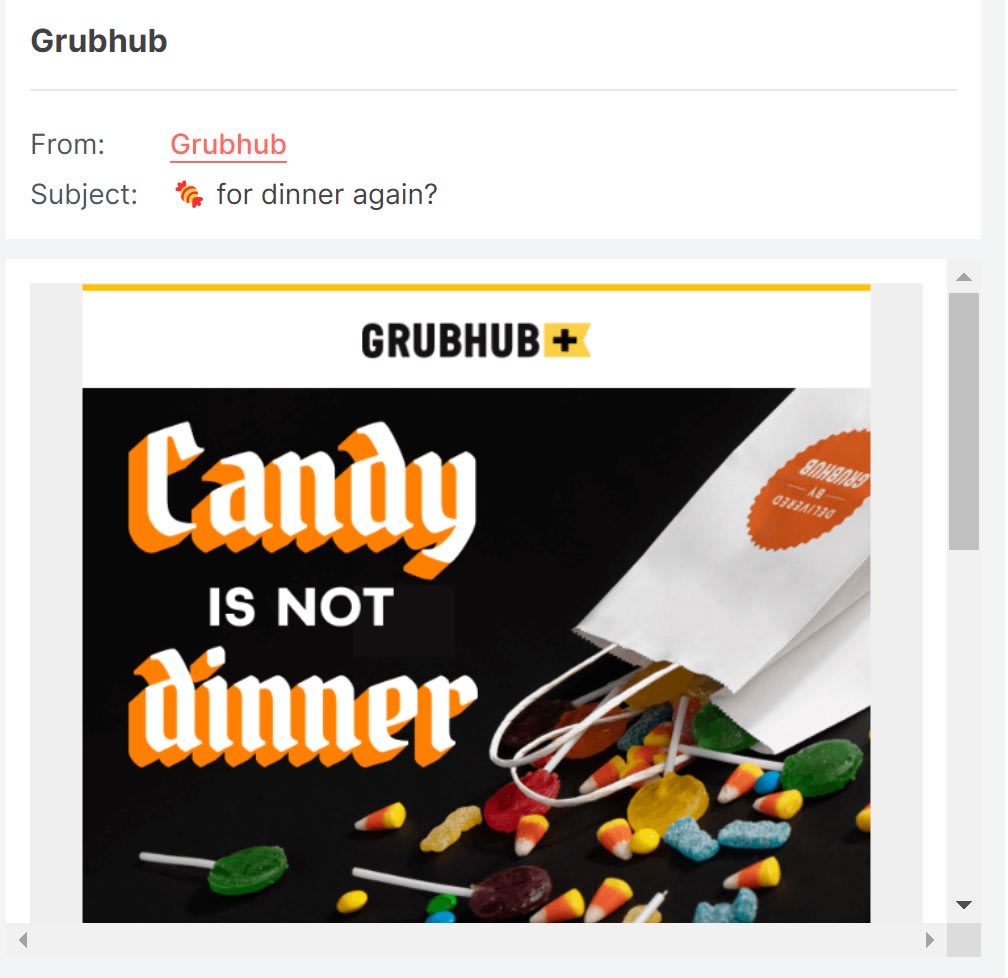
You might also create a sense of urgency with statements like “Last Chance” or “Save Your Spot,” as cereal company Surreal demonstrated in this Black Friday campaign.

But avoid using excessive punctuation or spam phrases like “Earn Extra Cash” or “Click Here,” which will likely send your email straight to the spam folder.
Most important of all: avoid click-baiting by ensuring the body content of your email matches the promise of the subject line.
4. Perfect your time to send
So, when’s the golden hour for sending outbound emails and ensuring your recipients double-click them open?
Omnisend data suggests Tuesdays have the highest open rates of the week, and the 10th is the best day of the month. The best times of day are 8 am, 1 pm, or 4-5 pm.
How else can you measure email marketing success?
Gathering data and analyzing the results of email marketing campaigns is crucial in determining the success of your strategies and improving future efforts. Through continuous monitoring and analysis, marketers can optimize their campaigns, increase ROI, and drive better business outcomes.
Combine email open rates with other metrics to give you a well-rounded picture of who is receiving your emails and how they respond to your content.With our seamless integration with Mailchimp, monitor metrics like the following with monday sales CRM:
- Click-through rates: to understand how your recipients interact with your email content and if they’re clicking through to your landing pages.
- Email subscriber churn: measure how many people click on the “Unsubscribe” button at the bottom of your email to examine whether your content matches their interest.
- Spam complaints: if recipients are actively going out of their way to report your emails, this is a red flag to rethink your email marketing campaign.
Track email open rates with monday sales CRM
monday sales CRM software is your key to unlocking critical email marketing insights. Track email delivery, open, and click-through rates and any other metric you may need a single platform. And since our interface promotes transparency, you can easily share these insights with your sales and marketing teams with the click of a button. Check out some of our best email tracking features:
- Email syncing: integrate with your Gmail or Outlook accounts and automatically log your sent emails in monday sales CRM with email integration.
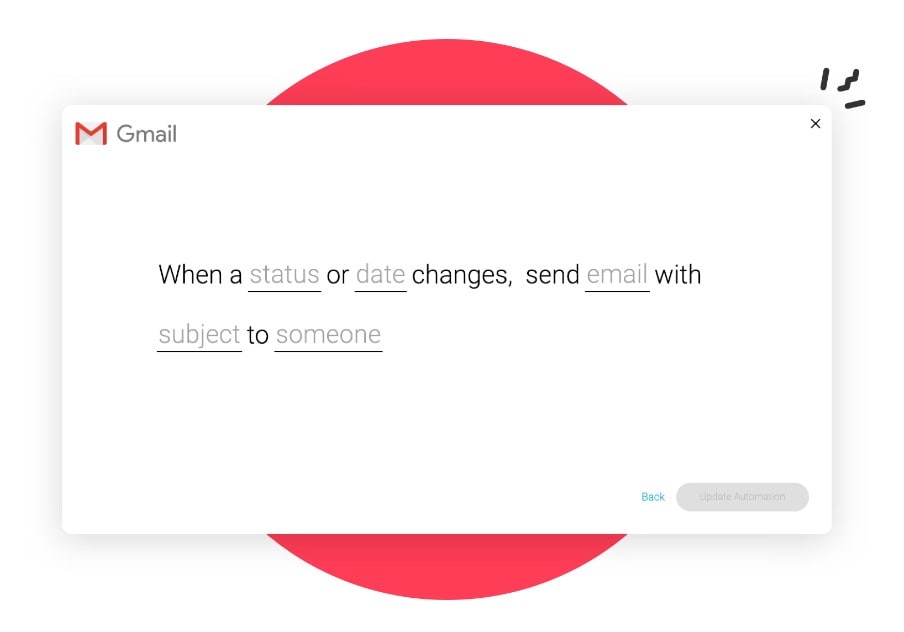
- Email automation: receive automatic notifications whenever a lead opens your message, so you can follow up appropriately.
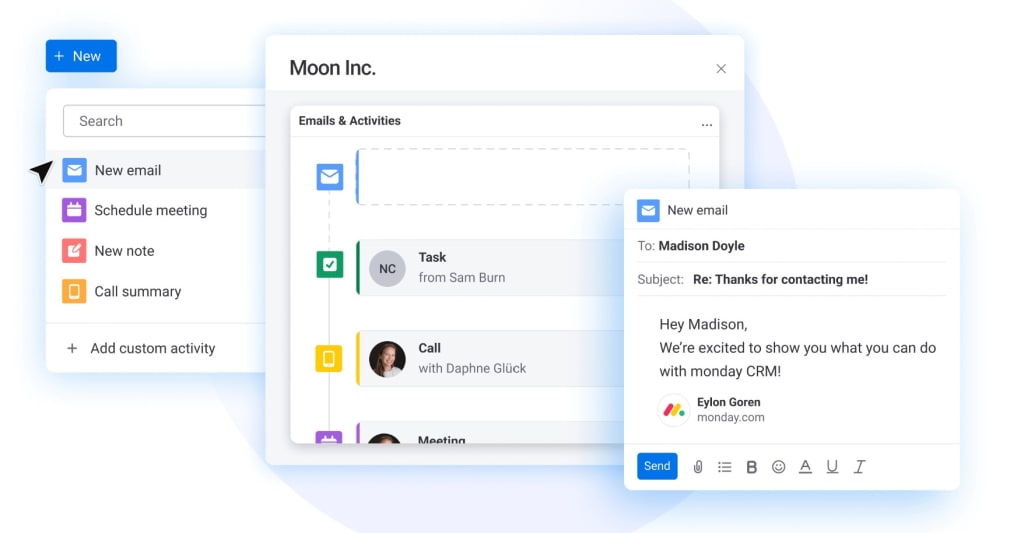
- Email templates: win back valuable time by auto-filling your email content with personalized details like recipient names.
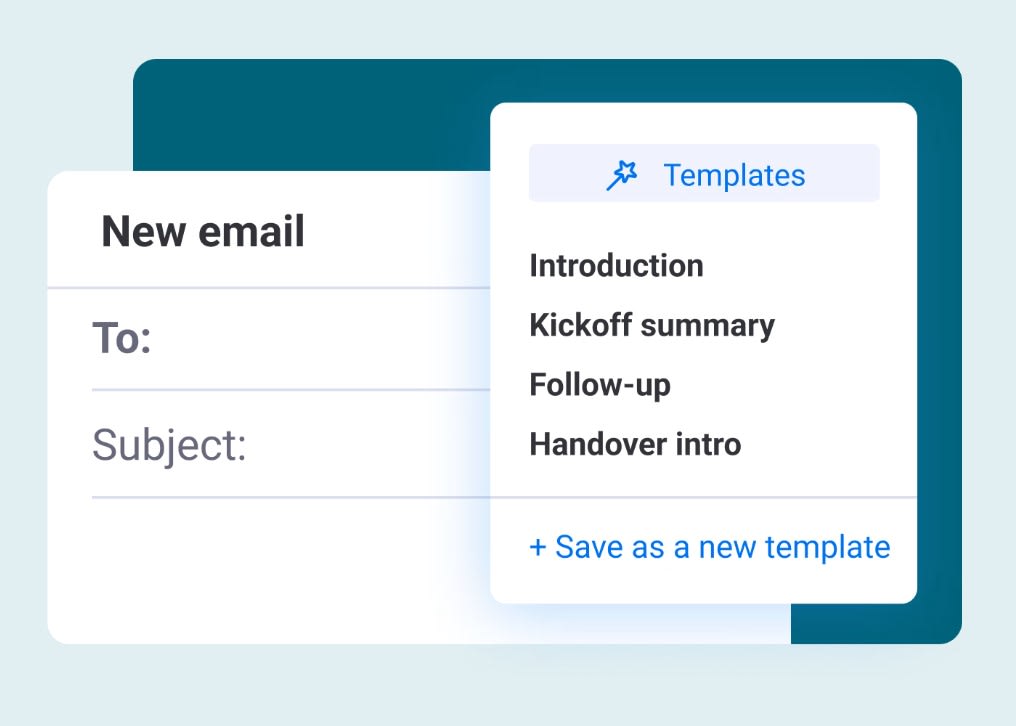
- Dashboards: display email marketing performance data in one place, so everyone is on the same page. Choose from a variety of board views in monday sales CRM, or use color codes to highlight which email leads might be ready for a specific email campaign or sales contact.
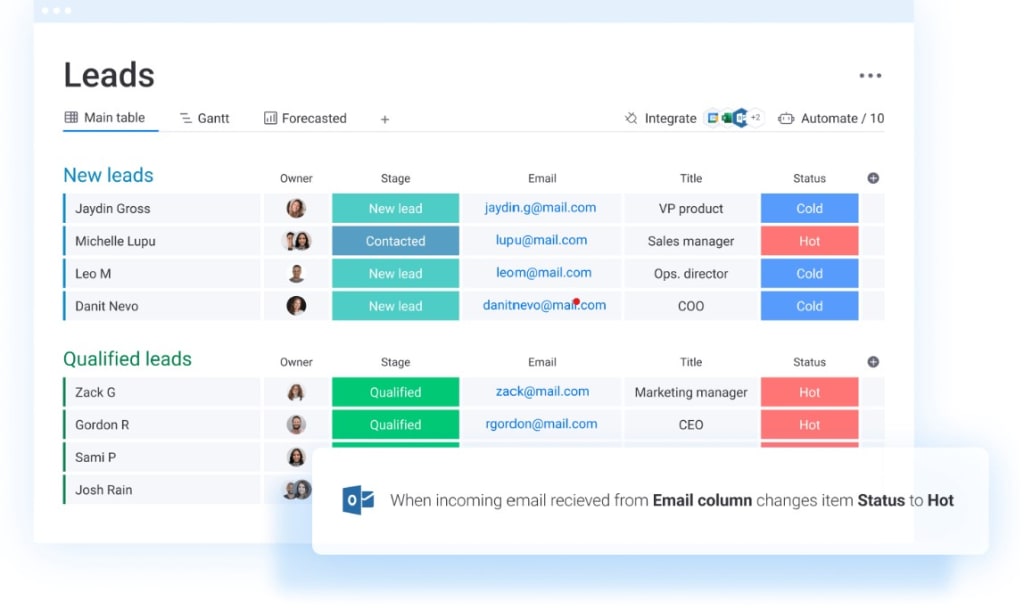
- Integrations: connect with marketing automation platforms like Mailchimp to stay on top of your campaigns, sync lead and mailing list data, and view all your key stats in one place.
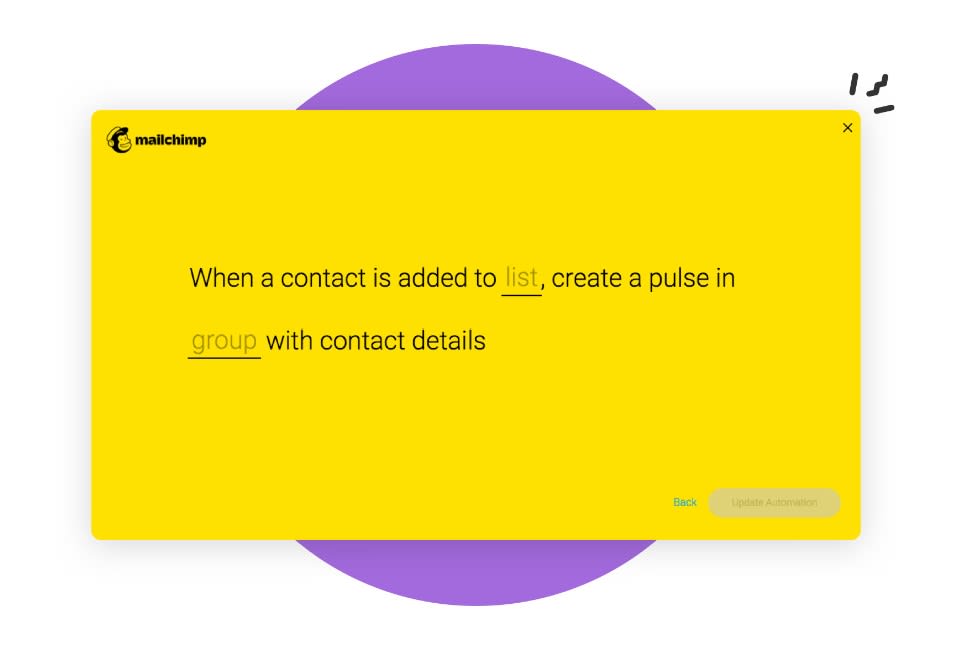
FAQs
1. Do email open rates matter?
Email open rates are an important metric for understanding the effectiveness of your email campaigns and optimizing future emails to improve results.
2. Is a 30% open rate good?
A 30% open rate is exceptionally good. It’s greater than the benchmark average of 21.33% across all industries, but it’s also greater than any individual industry listed in the Mailchimp benchmark report.
3. What is a bad email open rate?
A bad email open rate is relative to your industry and your previous email open rate. An open rate below 15% is generally considered low and could indicate an issue with your emails. But any downward trend in open rates is worth investigating, even if your previous email open rate has been high.
Start tracking email open rates and other important data points, and boost campaign success
Email is an important marketing tool to nurture leads by drip-feeding content, offers, and brand news over time. But you’re missing a trick if you send your email content out without tracking its performance.
Gain valuable insights into your data in a way that is accessible to you. Track email open rates and other valuable metrics like email delivery rate, click-through rates, subscriber churn, and signups in monday sales CRM today.

